Organization, CBID at Georgia Tech, Georgia(U.S.A)
Georgia Tech’s Center for Biologically Inspired Design consists of faculty that facilitate research, education, and training that further promotes biologically inspired design. The program offers K12 curricular materials that incorporate biological principles. This is created in order to foster imagination and curiosity about […]
Stanford Byers Center for Biodesign, Global fellowship
The Biodesign Innovation Fellowship is a 10-month experience that equips aspiring innovators with a proven, repeatable process to identify important healthcare needs, invent novel health technologies to address them, and prepare to implement those products into patient care through start-up, corporate channels, or other channels. In addition, the Innovation Fellows become part of the Stanford […]
Changes in structure and function of small muscular arteries play a major role in the pathophysiology of pulmonary hypertension, a burgeoning public health challenge. Improved anatomically mimetic in vitro models of these microvessels are urgently needed because nonhuman vessels and previous models do […]
Paper, Bioinspired dual-stiffness origami
Origami manufacturing has led to considerable advances in the field of foldable structures with innovative applications in robotics, aerospace, and metamaterials. However, existing origami are either load-bearing structures that are prone to tear and fail if overloaded or resilient soft structures with limited […]
Inspired by the phenomenon of water droplets hanging over rose petals, we propose a green interfacial self-assembly strategy to construct amphiphilic particles with controllable compartments for dual-drug encapsulation and controlled release. The method involves fabrication of “sticky” superhydrophobic materials, assembling superhydrophilic hydrogel beads with “sticky” superhydrophobic material into an amphiphilic particle, and amphiphilicity induced self-organization […]
In order to improve the impact energy absorption abilities and maintain good crushing load uniformity of auxetic honeycombs, a re-entrant arc-shaped honeycomb (RAH) model is proposed according to the concept of bio-inspired structure design. The in-plane impact resistances and absorbed-energy characteristics of bio-inspired auxetic RAHs subjected to a constant velocity crushing are numerically studied by […]
Bioinspired manufacturing, in the sense of replicating the way nature fabricates, may hold great potential for supporting a socioeconomic transformation towards a sustainable society. Use of unmodified ubiquitous biological components suggests for a fundamentally sustainable manufacturing paradigm where materials are produced, transformed into products and degraded in closed regional systems with […]
We demonstrate that shape-changing or morphing fins provide a new paradigm for improving the ability of vehicles to maneuver and move rapidly underwater. An ingenious solution is employed by fish to accommodate both the need for stability of locomotion and the ability to perform tight maneuvers: Retractable fins can alter the […]
Technologies that use stretchable materials are increasingly important, yet we are unable to control how they stretch with much more sophistication than inflating balloons. Nature, however, demonstrates remarkable control of stretchable surfaces; for example, cephalopods can project hierarchical structures from their skin in milliseconds for a wide […]
Organization: Center for Bioinspired Engineering, Cal Tech
The Caltech Center for Bioinspired Engineering develops new approaches to pressing technological challenges in energy, defense, and biomedicine by exploiting engineering solutions found in nature. The Center is organized into concurrent research programs that bring together faculty, staff and students from Aerospace, Bioengineering, Biology, Chemistry, Computing and Mathematical Sciences, and Mechanical […]
Although strong and stiff human-made composites have long been developed, the microstructure of today’s most advanced composites has yet to achieve the order and sophisticated hierarchy of hybrid materials built up by living organisms in nature. Clay-based nanocomposites with layered structure can reach notable stiffness and strength, but these properties are usually not accompanied by […]
The Biodesign Immersion Experience (BIE) is an NIH-sponsored 8-week summer program that focuses on the first two stages of the bio-design process: needs finding and needs screening. Selected students visit clinics and companies around the bay area in order to identify clinical gaps where bioengineers can make […]
Learn about our two Decals!
 Click here to find out more about our Fall Bioinspired Design Decal and our Spring Bioinspired Design in Action Decal – ALL MAJORS are welcome.
Click here to find out more about our Fall Bioinspired Design Decal and our Spring Bioinspired Design in Action Decal – ALL MAJORS are welcome.Berkeley BioDesign Community
 Click here to learn about the BioD: Bio-Inspired Design @ Berkeley student organization or here to signup for more info.
Click here to learn about the BioD: Bio-Inspired Design @ Berkeley student organization or here to signup for more info.Search
Student Login

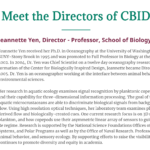
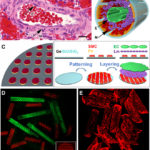
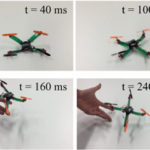
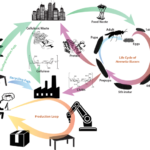
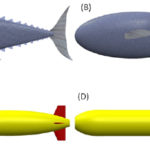
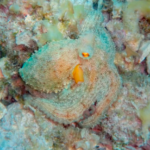
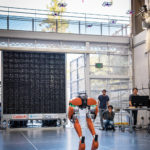
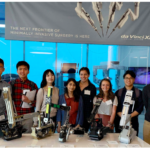


I imagine that the neurological circuits underlying these processes are governed by both 2d spacing maps with their brains as…
to reduce the impact of car accidents, it may be possible to study the force diverting physics of cockroaches to…
you see this type of head-bobbing stability in many avian creatures related to pigeons like chickens. the head ability to…
not like they taught horses how to run! this is an example of convergent evolution where both sea creatures and…
The brain functions in a similar way with neuronal connections. our brains are able to utilize the multiplicity of connections…